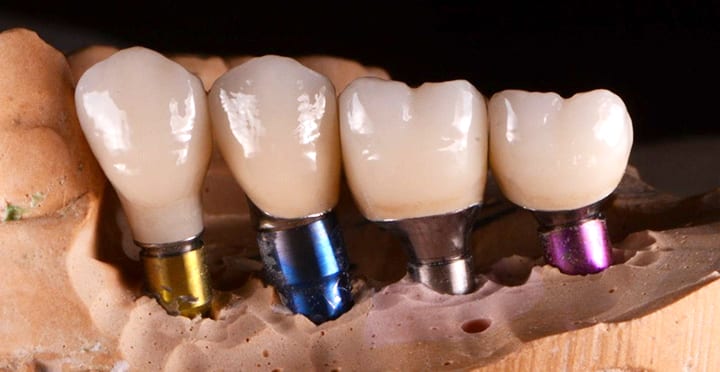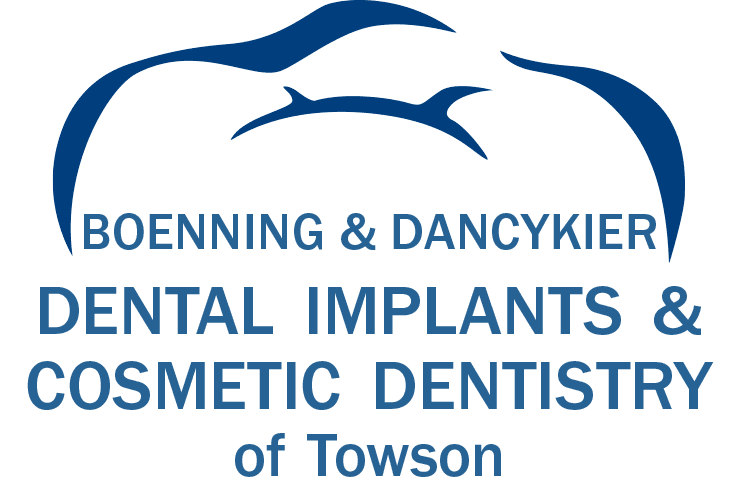Dental implants have been proven to be the best solution to treat tooth loss. Dental Implants and Cosmetic Dentistry of Towson utilizes this top-of-the-line treatment for patients who want a natural teeth replacement solution. Dr. Keith Boenning and Dr. Nathan Dancykier are expert implant dentists in Towson, MD, and are booking consultations for those interested in learning more about what they are and how they work.

Parts of a Dental Implant
Conventional dental implants typically have three separate components. This three-piece design is meant to replicate a natural tooth system. These three parts are the implant fixture (sometimes called the implant screw or post), the abutment, and the dental prosthesis or restoration. Once treatment is completed, these parts work in tandem in a way that allows patients to eat, speak, and smile as if they had real teeth.
Implant Fixture
The implant itself is a small screw-like post. This piece is typically made of titanium because the human body will not reject this material. Being made of titanium will increase the chance of osseointegration, meaning the implant post will fuse with the surrounding bone.
There are many different sizes available to accommodate different areas in the mouth. Most often, wide platform fixtures are used towards the back of the mouth for the larger teeth, while standard-sized ones are used towards the front of the mouth. There are even mini dental implants available to accommodate patients with less bone density or when there is little space between remaining teeth roots.
Abutment
The abutment is essentially the piece that connects the implant to the dental prosthesis. They come in many shapes and sizes to accommodate the different types of dental implant systems. This small connector piece is necessary because the implant is underneath the gums. Once attached to the implant, it will protrude from the gums so the prosthesis can be secured to it.
Implant Prosthesis
This part of the dental implant system replaces the crowns of the teeth. It will look and function like natural teeth. A prosthesis can be a dental crown, dental bridge, or denture. The type used depends on how many teeth the patient is missing. One missing tooth can be fully restored with a dental crown. Multiple missing teeth will be restored with a dental bridge. We can even restore a whole arch of teeth with an implant-supported denture. Each type will be custom-made in a dental lab to fit perfectly and blend seamlessly into the mouth.
What Makes Dental Implants Unique
What sets dental implants apart from other dental restorations is the use of implant fixtures. This screw-like post is surgically embedded into the jaw bone, where it will fully fuse with the bone. When you attach a prosthesis to them, the false teeth are almost as stable as natural teeth. They will never shift around in your mouth.
You can chew foods without restrictions. Not to mention they are easy to care for. Because the implants are inserted into the bone, no remaining healthy teeth are needed to support the dental restoration.
Do you want the best available tooth replacement system available? Schedule a consultation with Dr. Keith Boenning and Dr. Nathan Dancykier at their Towson, MD, dentist’s office to learn more about dental implants.
